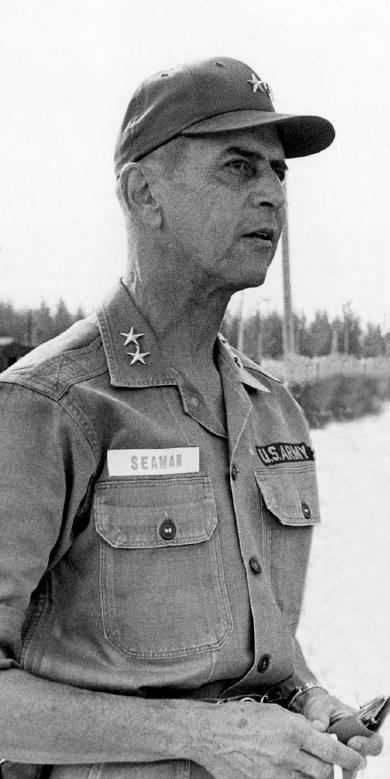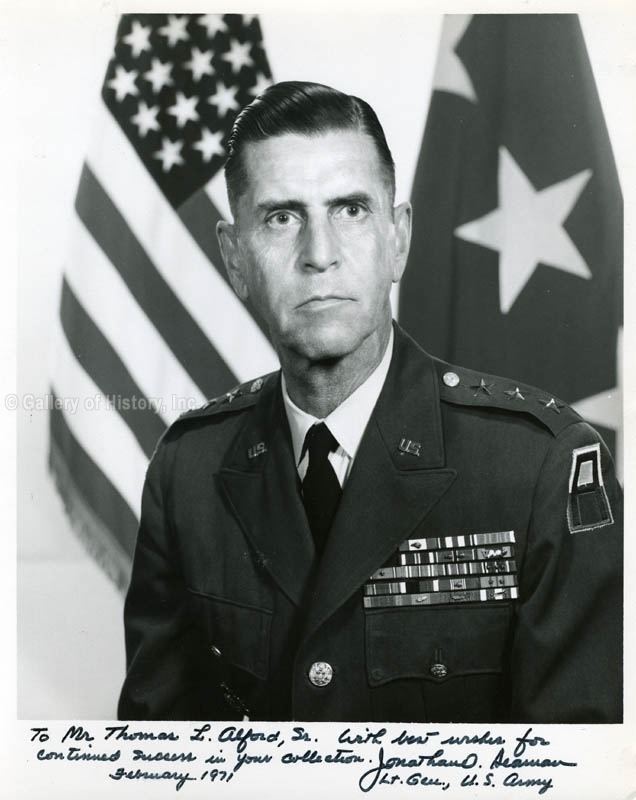Years of service 1934–1971 | Name Jonathan Seaman | |
 | ||
Born December 11, 1911Manila, Philippines ( 1911-12-11 ) Allegiance United States of America Battles/wars World War IIVietnam War Awards Distinguished Service Medal (3)Legion of MeritDistinguished Flying CrossBronze Star Commands held 30th Field Artillery Regiment, 1st Infantry Division, II Field Force, Vietnam, First United States Army Similar People William Westland, Cao Van Vien, Le Duc Anh | ||
Lieutenant General Jonathan Owen Seaman (December 11, 1911 – February 18, 1986) was a 1934 graduate of the United States Military Academy, a career U.S. Army officer and combat commander between World War II and the Vietnam War.
Contents

Education and early career
Seaman was born in Manila, Philippines, the son of a U.S. Army officer, B/Gen Albert Owen Seaman and his wife, Florence Thompson (Look) Seaman, 11 Dec 1911. He was appointed to United States Military Academy, graduating with the class of 1934 and was commissioned a second lieutenant in the 16th Field Artillery at Fort Myer, Virginia. In December 1935 to 1938, Seaman served as a White House military aide. After a teaching assignment at West Point in 1939, he was promoted to captain with the 4th Field Artillery at Fort Bragg.
World War II and Cold War
By 1942, as a major and battalion commander of the 4th Field Artillery regiment. He served in World War II in both European and Pacific theaters.
From 1953 to 1954, he commanded the 30th Field Artillery Group at Yorkhof Kasserne, Germany. Seaman was later honored in 1999 by the 30th Field Artillery when the 3rd Battalion headquarters at Fort Sill, Oklahoma was named "Seaman Hall".
Vietnam and Retirement
As a major general in 1965, Seaman was named commander of the U.S. 1st Infantry Division at Fort Riley, Kansas. The 1st Division was the first Army combat division to be called up for service during the Vietnam War, arriving in theater in July 1965, with Seaman being the first of six combat commanders during the war. In March 1966, Seaman was promoted to commander of U.S. II Field Force, a 100,000 man fighting force that included the 1st Division, along with two other divisions and several independent brigades.
In 1967, he returned stateside and assumed command of First United States Army at Fort Meade, Maryland. Seaman was the deciding official in cases of 13 officers involved in the failure to investigate or cover up the 1968 My Lai Massacre during the Vietnam War.
In 1971, he retired to Beaufort, South Carolina after 37 years of active duty. Seaman died at the Veterans Administration Hospital in Charleston, South Carolina on February 18, 1986 at age 74, He was buried at the Beaufort National Cemetery.
Seaman was married to Mary Grunert, daughter of U.S. Army general and a former First United States Army commander, George Grunert.
